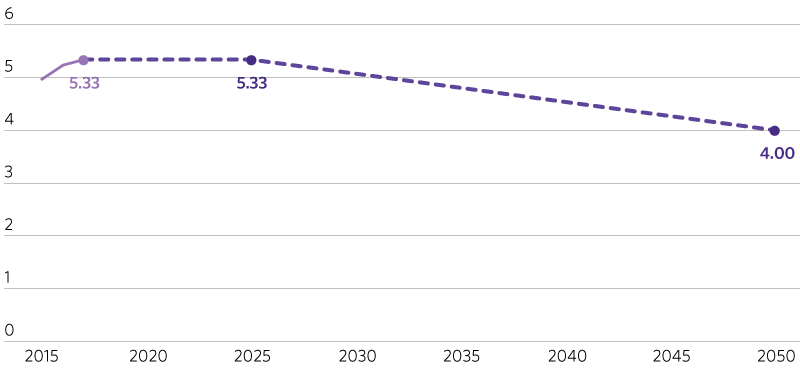Indicator
Average Congested Hours of Weekday Travel for Limited Access Highways
Congestion has negative effects on the regional economy (in terms of wasted time) and air quality (in terms of additional emissions). This indicator measures how long the region’s expressways are congested during weekday travel on average. “Congested hours” is defined as the number of hours each weekday that travelers could travel at least 10 percent faster in free-flow conditions. This measure is also a federally required performance measure under MAP-21.
Targets
The goal for 2050 is to experience a one hour twenty minute reduction in the average number of hours per weekday that the region’s expressways are congested. The short-term goal for 2025 is to keep the same duration of average weekday congestion as 2017: 5.33 hours. The short-term goal reflects the fact that there are not many capital improvements that will be completed on the expressway system by 2025. Additionally, it could take a number of years before new vehicle technology has fully penetrated the market. The lower congestion goal in 2050 reflects anticipated new vehicle technology, capital improvements to the transportation network, and the implementation of operational strategies like congestion pricing, incident management, and truck delivery times to address congestion.
2025: 5.33 hours or less of congestion
2050: 4.00 hours or less of congestion
Sections
- Actual
- Target

GO TO 2040 Context
While this indicator is nominally carried forward from GO TO 2040, the methodology behind it has been overhauled as part of CMAP’s efforts to align plan indicators with the MAP-21 performance measures where significant overlap exists. This change in methodology has made the data and targets described in GO TO 2040 largely obsolete. While GO TO 2040 targeted a near-term increase in congested hours followed by a long-term return to 2010 conditions, ON TO 2050 is targeting a near-term stabilization followed by a long-term decline.